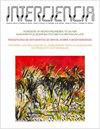低出生体重流行病学概况,Córdoba部门,哥伦比亚,2020-2021年
IF 0.4
4区 综合性期刊
Q4 ECOLOGY
引用次数: 0
摘要
低出生体重(2500克)是监测孕产妇、围产期和儿童健康进展的最重要指标之一。材料和方法:描述性、定量分析相关性研究。对哥伦比亚Córdoba省卫生发展部公共卫生流行病学监测系统(SIVIGILA)报告的1410例低出生体重新生儿进行了分析。分析使用R统计包和频率表。结果:35%的母亲年龄在17-21岁之间,55%的母亲居住在省会城市。92%的人从事各种行业,82%的人属于阶层,2%的人融入了流动人口,66%的人具有中等教育水平。另一方面,47%的孩子达到了37周的妊娠期,其中94%的孩子被归类为低出生体重。讨论:这些结果与其他作者的结论一致,他们认为社会经济因素影响低出生体重。结论:母亲的社会人口学特征是低出生体重的决定因素。本文章由计算机程序翻译,如有差异,请以英文原文为准。
Epidemiological profile of low birth weight, department of Córdoba, Colombia, 2020-2021
Low birth weight (<2500 g) is one of the most important indicators to monitor progress in maternal, perinatal and child health. Materials and methods: Descriptive, analytical- correlational study with a quantitative approach. 1410 cases of newborns with low birth weight, reported in the Public Health Epidemiological Surveillance System (SIVIGILA) of the Department of Health Development, in the department of Córdoba, Colombia, were analyzed. For the analysis, the R statistical package and frequency tables were used. Results: 35% of the mothers were between the ages of 17-21 and 55% of them reside in municipal capitals. 92% had various trades as their occupation, 82% belong to stratum 1, 2% integrate the migrant population and 66% have a secondary educational level. On the other hand, 47% of the children reached 37 weeks of gestation and 94% of them were classified as low birth weight. Discussion: These results agree with those of other authors who determined that socioeconomic factors influence low birth weight. Conclusions: The sociodemographic characteristics of the mother are determining factors for low birth weight.
求助全文
通过发布文献求助,成功后即可免费获取论文全文。
去求助
来源期刊

Interciencia
综合性期刊-生态学
CiteScore
0.80
自引率
25.00%
发文量
1
审稿时长
4-8 weeks
期刊介绍:
Interciencia is the monthly multidisciplinary publication of the INTERCIENCIA Association. It is dedicated to stimulate scientific research, its humanitarian use and the study of its social context, specially in Latin America and the Caribbean and to promote communication between the scientific and technological communities of the Americas.
Interciencia has been published uninterruptedly since 1976. Its Founding Director, Marcel Roche (endocrinologist and sociologist of science) was editor until 2008, and thereafter Miguel Laufer (neurobiologist) has been in charge. It has been included since 1978 in the Science Citation Index and other international indexes, and since 2008 it maintains an open access electronic version with material from 2005 onwards.
The priority areas of the journal, without exclusion of other areas, are Agronomy, Arid Lands, Food and Nutrition, Biotechnology, Ecology and Environment, Energy, Innovation and Technology Transfer, Marine Resources, Non-renewable Resources, Science Education, Science Policy, Study and Sociology of Science, and Tropical Forests.
Interciencia publishes in Spanish, Portuguese and English research and review articles, communications and essays, all of which are subjected to peer review. Additionally, it includes non-refereed sections such as Editorial, Letters to the Editor, Open Town Hall, Book Reviews and Upcoming Events.
All the material submitted to the journal for publication and accepted by the Editorial Committee in view of its quality and pertinence is subjected to review by peer specialists in the corresponding fields of knowledge. Neither the INTERCIENCIA Association, nor the journal or the institutions to which the authors belong carry responsibility for the contents. Signing authors are responsible for the material published under their names.
 求助内容:
求助内容: 应助结果提醒方式:
应助结果提醒方式:


